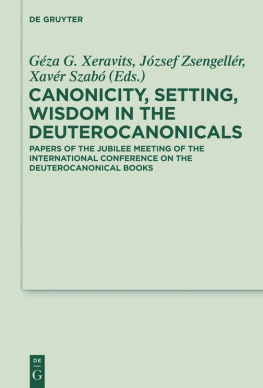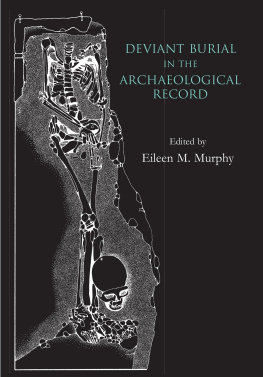
Neolithic Studies Group Seminar Papers
Series Editor Timothy: Darvill
Published by
Oxbow Books, Oxford, UK
Oxbow Books and the individual authors, 2010
ISBN 978 1 84217 404 3
EPUB ISBN: XXXXXXXXXXXXX
This book is available direct from
Oxbow Books, Oxford, UK
(Phone: 01865-241249; Fax: 01865-794449)
and
The David Brown Book Company
PO Box 511, Oakville, CT06779
(Phone: 860-945-9329; Fax: 860-945-9468)
or
from our website
www.oxbowbooks.com
A CIP record for this book is available from the British Library
Library of Congress Cataloging-in-Publication Data
Round mounds and monumentality in the British Neolithic and beyond / edited by Jim Leary, Timothy
Darvill, and David Field.
p. cm. -- (Neolithic Studies Group seminar papers ; 10)
Papers from a seminar held Nov. 3, 2008 at the British Museum.
Includes bibliographical references.
ISBN 978-1-84217-404-3 (pbk.)
1. Mounds--Great Britain--Congresses. 2. Monuments--Great Britain--Congresses. 3. Neolithic period
-Great Britain--Congresses. 4. Great Britain--Antiquities--Congresses. 5. Mounds--Congresses. 6.
Monuments--Congresses. 7. Neolithic period--Congresses. 8. Antiquities--Congresses. I. Leary, Jim. II.
Darvill, Timothy. III. Field, David, 1950
GN805.A2R68 2010
936.1--dc22
2010029113
Printed in Great Britain by
Information Press, Eynsham, Oxfordshire
Foreword
This book presents the proceedings of a seminar held under the aegis of the Neolithic Studies Group (NSG), one of an ongoing series of NSG Seminar Papers. The NSG is an informal organization comprising archaeologists with an interest in Neolithic archaeology. It was established in 1984 and has a large membership based mainly in the UK and Ireland, but including workers from the nations of the European Atlantic seaboard. The annual programme typically includes a seminar in London during the autumn and, in spring-time, a field meeting in an area of northwest Europe known to be rich in Neolithic remains.
Membership is open to anyone with an active involvement in the Neolithic of Europe. The present membership includes academic staff and students, museum staff, archaeologists from government institutions, units, trusts, and those with an amateur or avocational interest. There are no membership procedures or application forms, and members are those on the current mailing list. Anyone can be added to the list at any time, the only membership rule being that the names of those who do not attend four consecutive meetings are removed from the list (in the absence of apologies for absence or a request to remain on the list).
The Group relies on the enthusiasm of its members to organize its annual meetings; the two coordinators maintain the mailing lists and finances. Financial support for the Group is drawn from a small fee payable for attendance of each meeting.
Anyone wishing to contact the Group and obtain information about forthcoming meetings should contact the coordinators or visit the NSG website at:
http://www.neolithic.org.uk/
Timothy Darvill and Kenneth Brophy
NSG Coordinators
Preface and Acknowledgements
Round mounds have been a feature of Neolithic archaeology since the period was defined in the mid-nineteenth century. Liffs Low, Derbyshire, excavated in 1843 by Thomas Bateman set the scene, followed by work at notable sites such as Duggleby Howe, North Yorkshire, and Linch Hill, Oxfordshire. By the time Stuart Piggott published his magisterial Neolithic Cultures of the British Isles in 1954 more than a dozen burials under round barrows were associated with his Secondary Neolithic in addition to the wide scatter of round mounds covering passage graves and various other kinds of megalithic chamber tomb. However, it was Ian Kinness Round barrows and ring-ditches in the British Neolithic published in 1979 that really defined the nature and extent of these otherwise rather neglected monuments. Focusing on the non-megalithic barrows, Kinnes catalogued just under a hundred examples across England, Wales, and Scotland, mainly in small geographically discrete clusters, and showed that as a class of monument there were many different types and regional variations. He amply demonstrated that round mounds represented a long-lived tradition spanning the fourth and third millennia BC, initially integral to the insular British Neolithic whose defining and commemorative role survived as a distinctive factor into later phases.
Thirty years on from Kinness review it seemed appropriate to look again at these monuments, and the papers published here are largely those presented at a Neolithic Studies Group seminar on the subject that took place at the British Museum on Monday 3 November 2008, organised by the present editors. The seminar was entitled Round mounds and monumentality, and aimed to consider the chronology and development of Neolithic round mounds, their changing form and use, relationship to contemporary cultural, ancestral and natural landscapes, the extent to which they provide scope for identifying local and regional social organization and, not least, why they were round. Following the conference further papers were offered for this edited volume, and thus our reach extended into parts of the British Isles not considered during the tight programme at the original seminar and includes material from further afield across the Atlantic Ocean in order to consider the role of round mounds in comparable situations elsewhere in the world. At the original London seminar we were privileged to have a short introductory paper by Ian Kinnes and Marcus Brittain as a retrospective of Neolithic round barrow studies over the period 1979 to 2008 and a taster of a more substantial piece to be published elsewhere in due course.
We have arranged the papers here in rough geographic order starting in the north and working southwards. Following a wide-ranging introduction we start in Scotland, moving down to the Isle of Man, Yorkshire, the Peak District, the Cotswolds, Wessex and Wales before leaping across to Ireland and then to North America where mound-building traditions are widely scattered through the Mid-West in particular. We conclude with another wide-ranging essay on the nature of round mounds. We recognize that not everything that could be considered is covered here, but hope that as a whole these papers show the state of play at this point in time. Radiocarbon dating, both for individual round barrows and for regional barrow-building traditions, features in many of the papers included here. Throughout the book a simple prehistoric chronology based on a back-projection of the prevailing Western Christian Calendar is used, with dates cited as solar years BC (BCE) or AD (CE) in years, decades, centuries, or millennia. Where neither BC nor AD is indicated reference is being made to a date AD. Where radiocarbon ages have been calibrated as date ranges (usually given at 2) these are cited as cal BC followed by the laboratory number, original determination in years BP (before AD 1950), and the relevant standard deviation expressed at 1. The editors would like to thank the British Museum, in particular Gill Varndell from the Department of Prehistoric and Roman Antiquities for allowing and facilitating the smooth running of the seminar at which the papers in this volume were given. We would also like to thank Clare Litt and latterly Julie Gardiner at Oxbow for help and assistance in getting this volume into print.
Front cover image used by kind permission of James ODavis ( English Heritage).
Next page













